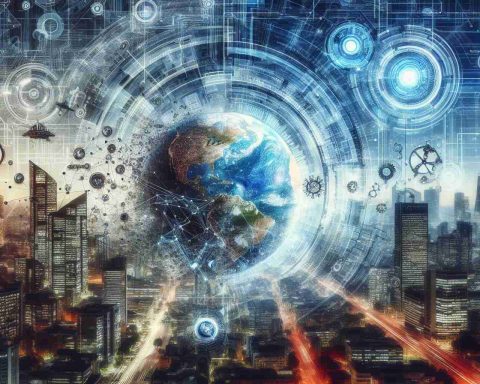Artificial Intelligence (AI) is revolutionizing various industries, leading to increased investment in data centers to support AI development. Tech giants like Alphabet, Meta, Amazon, and Microsoft are projected to invest a total of $104 billion in new AI data centers this year alone. Alongside smaller tech companies, the total investment in AI data centers from 2024 to 2027 could reach $1.4 trillion.
This surge in AI interest is creating a new investment frenzy throughout the AI supply chain, affecting semiconductor manufacturers, server producers, network equipment manufacturers, power transmission equipment, cooling systems, and more. Companies are boosting their capital expenditures significantly to keep up with the AI wave.
Industry experts warn of potential risks associated with the rapid AI investment boom, particularly in the supply chain’s dependence on key players like Nvidia, the world’s most expensive chip manufacturer. This heavy reliance on Nvidia could lead to supply chain disruptions if the company accelerates its chip release schedule.
Moreover, the expansion of AI computing and the proliferation of data centers are intensifying energy demands. With forecasts indicating a twofold increase in electricity demand for data centers and AI by 2026, there are concerns about potential energy shortages that could constrain operations.
Furthermore, the energy-intensive nature of data centers is exacerbating the greenhouse gas emissions of tech companies. Google’s emissions rose by 13% last year compared to the previous year, while Microsoft saw an increase of over 29% in emissions compared to 2020. The growing demand for electricity to power data centers is contributing to this concerning trend.
In conclusion, while AI presents unprecedented opportunities and advancements, stakeholders must address the energy consumption and emission challenges associated with its rapid evolution to ensure a sustainable and environmentally conscious technological future.
The Impact of Artificial Intelligence Evolution on Energy Consumption and Emissions: Exploring Uncovered Realities
The accelerating evolution of Artificial Intelligence (AI) is not only reshaping industries but also reshaping the energy landscape in unforeseen ways. As AI technologies continue to advance at a rapid pace, new layers of complexity and challenges are emerging, raising important questions about the future implications on energy consumption and emissions.
Key Questions:
1. How does the increasing deployment of AI impact energy consumption trends globally?
2. What are the key challenges associated with mitigating the environmental impact of AI evolution on energy consumption and emissions?
3. Are there viable solutions or strategies to optimize energy usage in AI systems without compromising performance?
Answering the Questions:
1. The increasing deployment of AI is expected to alter the energy consumption landscape significantly. According to recent studies, the energy demand of data centers driven by AI applications is projected to surge by more than twofold by 2026, indicating a substantial shift in global electricity usage patterns.
2. One of the main challenges is balancing the escalating energy demands of AI systems with the imperative to reduce carbon emissions. As energy-intensive data centers proliferate to accommodate AI workloads, the associated greenhouse gas emissions pose a pressing environmental concern.
3. Optimizing energy efficiency in AI systems is paramount to address the challenges posed by increased energy consumption. Implementing energy-efficient hardware designs, adopting renewable energy sources, and developing advanced cooling technologies are among the strategies that can help mitigate the environmental impact.
Advantages and Disadvantages:
Advantages:
– AI technologies can enhance energy efficiency in various sectors by optimizing processes and resource allocation.
– AI-driven predictive maintenance can improve the operational efficiency of energy infrastructure, reducing downtime and costs.
– Smart grid systems powered by AI algorithms can enable better energy management and grid stability, enhancing overall system reliability.
Disadvantages:
– The surge in AI applications could lead to a surge in energy consumption, exacerbating the existing environmental challenges.
– Dependence on energy-intensive data centers for AI computations may strain energy resources and contribute to carbon emissions.
– Balancing the benefits of AI innovation with the environmental costs remains a critical concern for sustainable development.
As the world navigates the complexities of AI-driven transformations, addressing the energy consumption and emission implications of these advancements is crucial for building a resilient and sustainable future.
For further insights on energy consumption trends and environmental impacts of AI evolution, visit World Energy Council.

















